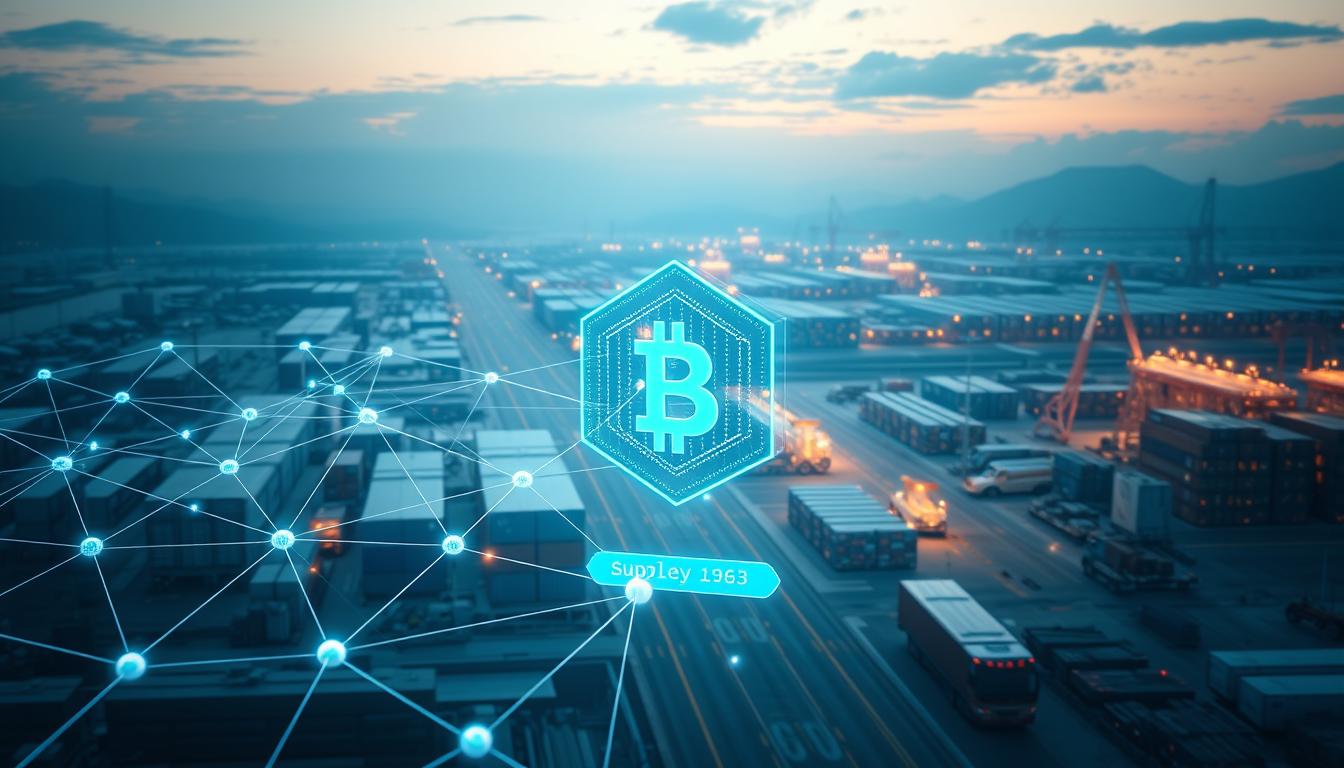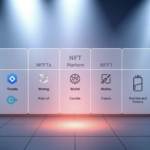Now Reading: Ocean protocol OCEAN data sharing AI marketplace: Secure Data Transactions
- 01
Ocean protocol OCEAN data sharing AI marketplace: Secure Data Transactions
Ocean protocol OCEAN data sharing AI marketplace: Secure Data Transactions

Founded in 2017, this framework tokenizes datasets and services into on-chain ERC-20 datatokens while keeping raw information off-chain under provider control.
The platform lets providers publish an asset, set pricing, and choose automated market or fixed rates. Fees and staking create transparent signals that align incentives for sellers and buyers.
Compute-to-Data enables algorithms to run where records reside, preserving privacy while enabling model training for artificial intelligence builders. Governance uses OCEAN as the exchange and voting unit, and OceanDAO funds community projects since 2020.
Security is built in: on-chain access records, off-chain storage, and cryptographic controls reduce exposure. Assets can represent raw feeds or value-added services, giving institutions a way to monetize without giving up control.
Key Takeaways
- Tokenization lets providers sell access without moving raw information.
- Compute-to-Data protects sensitive sources while enabling model training.
- Transparent fees, staking, and governance align long-term value.
- Immutable provenance improves auditability and buyer confidence.
- The community and team have evolved the system toward enterprise use.
Why data marketplaces matter now in the AI era
Across industries, the surge in connected sensors and advanced models has turned information into strategic assets.
The rapid rise of machine learning, cheaper compute, and ubiquitous IoT has created an explosion of usable information. Organizations see clear value in curated sets, but legal compliance and fragmented ownership block practical access.
Personal data governance and ethical concerns now demand consent, audit trails, and transparent usage rules. Buyers need verifiable control while providers require safe monetization paths.
Tokenized rights and programmable policies move records out of silos and into tradable products. Standardized markets cut transaction costs, speed discovery, and enable cross-industry cooperation without weakening privacy settings.
- Verifiable access with policy enforcement builds trust in multi-party ecosystems.
- Market mechanisms help price, curate, and improve model-ready inventories.
- Providers and buyers gain measurable usage metrics and reputation signals.
In short: a robust market balances privacy and utility, making responsible exchange a competitive advantage in the emerging data economy and boosting adoption of ocean protocol tools for compliant collaboration.
What is Ocean Protocol and how it powers the data economy
A decentralized framework turns datasets and services into programmable assets. This model mints ERC-20 tokens that represent rights to an asset while keeping raw information off-chain under provider control.
Blockchain technology anchors provenance, timestamps, and permissions on multiple chains (Ethereum, Polygon, Binance Smart Chain, Energy Web Chain, Moonriver). Smart contracts record access and policy rules, creating verifiable trails for compliance.
The access mechanism uses datatokens for purchases and approved compute. Providers publish an asset, set pricing (fixed or AMMs), and attach policies. Buyers spend tokens to run approved algorithms or retrieve permitted outputs.
- Governance and incentives: OCEAN serves as exchange currency, for staking to curate pools, and for OceanDAO grants.
- Privacy by design: personal data stays off-chain; Compute-to-Data runs algorithms near the source.
- Integration: smart contracts support KYC hooks and enterprise workflows for secure access data flows.
The team and community build open tooling to reduce friction, making this architecture a practical path to run a compliant, tokenized data marketplace.
Datatokens and Data NFTs: tokenizing datasets and services
Treating each dataset or service as a tokenized product unlocks new ways to license, bundle, and trade access.
ERC-20 datatokens are issued per dataset or service and act as fungible access keys. Sending a datatoken grants a defined access — one-time redemption, a subscription-like time window, or a compute job. These tokens are portable across wallets and plug into DeFi rails for liquidity.

ERC-721 Data NFTs for ownership
Data NFTs represent sovereign IP ownership and minting rights. A single NFT can delegate datatoken issuance, enable licensing flows, and route revenue to creators.
Composability and fractional models
Standards like ERC-998 let providers bundle datasets into baskets or sector indexes. Re-fungible wrappers can fractionalize an NFT via bonding curves, opening collective ownership and liquidity for high-value assets.
Control and practical use
Access policies enforce allow-lists, credential checks, and region-based rules. In practice, a provider mints a Data NFT, configures a datatoken with time-bound access, and lists it with schemas and docs.
Tooling and SDKs simplify issuance, verification, and productization, making it easy to create coherent services and to spawn secondary markets for access instruments. For a deeper technical primer, read a technical guide.
Inside Ocean Market: publishing, pricing, curation, and exchange
Listing an asset on the market begins with clear metadata and a simple minting step. Providers define a schema, attach docs, and mint a Data NFT plus ERC-20 access tokens to represent rights.

Publishing value-added offerings
Start by writing concise metadata and uploading docs that explain format, schema, and licensing.
Mint the NFT and datatokens, then list value-added datasets or services to justify premium pricing.
Pricing: fixed versus AMM discovery
Fixed pricing gives predictability for buyers and simple revenue tracking.
AMMs use bonding curves and liquidity pools to enable continuous price discovery. Providers can seed pools and tune fees to attract traders.
Staking, curation, and exchange fees
Typical exchange fees run near 0.3% and split between stakers, the marketplace, and community funds. Default pool fee is often 0.1% and is adjustable by the provider.
Curators stake on OCEAN-datatoken pairs to signal quality and earn a share of pool fees. This helps buyers find higher-quality offerings.
| Function | Typical Setting | Benefit |
|---|---|---|
| Publishing | Metadata + Data NFT + datatokens | Clear provenance and monetization |
| Pricing | Fixed or AMM (bonding curve) | Predictable sales vs. continuous discovery |
| Fees & routing | ~0.3% total; default 0.1% pool fee | Providers keep most proceeds; ecosystem earns modest share |
| Access fulfillment | Token redemption, Compute-to-Data, API creds | Controlled delivery and audit trails |
For example, a provider can launch a curated pool, seed liquidity, then tweak weights and fees after measuring demand and usage. Access is fulfilled when a user sends a token to redeem a download, trigger compute, or receive API credentials.
Operational path: run your own marketplace using built tools, add branding, set custom fees, and keep local policies like allow-lists or embargo dates. Interoperability lets catalogs be discovered across other marketplaces while preserving provider controls and revenue splits.
Compute-to-Data: privacy-preserving AI model training and analytics
Instead of exporting files, C2D runs code where the information already resides, reducing exposure risk and preserving provider sovereignty. This design keeps raw data on-prem or inside a provider-controlled cloud, so only approved outputs leave the environment.

How on-site compute enables secure training
Core idea: the code travels to the record, not the reverse. That lowers leak risk while enabling large-scale model training and federated analytics across multiple holders.
Operator-Service and Operator-Engine roles
The Operator-Service is the gateway: it validates requests, enforces policies, and coordinates jobs. The Operator-Engine is the execution layer that runs containers or notebooks under constrained runtimes.
Fine-grained control, tokens, and workflow
Access is governed by datatokens that specify what workloads run, how long, and how many jobs are allowed. Providers approve algorithms, container images, and runtime limits to ensure reproducibility, auditability, and compliance.
- Security-by-design: only model weight updates, metrics, or approved outputs egress.
- Interoperability: works with Web2 clouds, IPFS, or hybrid stacks and connects to MLOps tools.
- Sensitive use cases: enables regulated sectors like healthcare and finance to gain insights without moving raw holdings.
Practical result: buyers redeem tokens, submit jobs, monitor progress, and retrieve results while providers keep control and immutable logs trace every run.
OCEAN token, incentives, and community governance
On-chain incentives and collective decision-making align contributors, curators, and product teams around long-term goals.
Token utility. OCEAN powers staking, buys access, and unlocks governance votes that steer roadmaps and grants. Staking signals quality and routes rewards to curators who back proven assets.

Data Farming, fee flows, and the Web3 sustainability loop
Data Farming rewards curation and real consumption, not speculation. Small exchange fees split among stakers, marketplace operators, and the community treasury.
This loop channels revenue into burns, OceanDAO grants, and curator payouts to sustain healthy liquidity and steady growth.
OceanDAO grants, curation rewards, and marketplace growth
OceanDAO funds open-source tools, integrations, and research that expand the ecosystem. Simulation work (for example, agent-based tuning) helps calibrate reward and fee parameters for durable dynamics.
Governance mechanics let the community prioritize infrastructure, compliance features, and product work that aid enterprise adoption and model training workflows.
| Mechanism | Purpose | Outcome |
|---|---|---|
| Staking | Signal dataset quality | Curator rewards + clearer discovery |
| Data Farming | Incentivize usage & curation | Better liquidity and real utility |
| Exchange fees | Fund treasury & rewards | Sustainable funding loop |
| OceanDAO grants | Fund tools and integrations | Ecosystem growth and enterprise readiness |
Conclusion: aligned incentives, transparent fee flows, and active community governance accelerate the data economy while preserving openness and accountability.
Ocean protocol OCEAN data sharing AI marketplace for enterprises
Enterprises need turnkey stacks that let teams monetize assets while keeping strict control and strong privacy protections. The enterprise stack is open-source, cloud-agnostic, and built for compliance.
Ocean Enterprise: compliant, scalable, cloud-agnostic data spaces
Providers can deploy branded spaces that integrate with existing clouds and keep sovereignty intact.
Security features include allow-listing, encryption-at-rest, audit logs, and hardened compute that prevents sensitive outputs from leaking.
Interoperability, SSI, and advanced IP licensing for regulated markets
Standards alignment such as Gaia-X self-descriptions enables cross-network discovery and trusted partnerships.
SSI and flexible licensing let complex firms manage intellectual property and compliance across joint projects.
Payments and pricing: EUROe e-money, fiat, and advanced models
Built-in EUROe support and planned fiat rails let teams offer subscriptions, tiers, and usage-based pricing for data services.
Easy onboarding, analytics, and governance for teams
- Seller dashboards and guided docs speed onboarding of new services.
- Analytics show consumption, revenue splits, and curation signals for products and assets.
- Role-based policies control who can access datasets and data assets.
| Feature | Benefit | Use |
|---|---|---|
| Cloud-agnostic deploy | Faster rollout | Enterprise clouds |
| Payments (EUROe) | Fiat compliance | Subscriptions |
| Compute-to-Data | Privacy-preserving compute | Sensitive analytics |
Practical path for a provider: publish enterprise metadata, mint licenses via NFTs, enable EUROe payments, and enforce role-based access. This approach proves fast time-to-value across agriculture, healthcare, mobility, and cybersecurity use cases.
Real-world data services and industry use cases
Hands-on examples demonstrate how controlled execution and verifiable provenance improve trust and outcomes.
Healthcare: privacy-driven insights
Case: hospitals and labs run Compute-to-Data to train models on sensitive datasets without moving PHI.
This approach standardizes exchange and keeps compliance intact while unlocking collaborative research.
Agriculture and IoT
Example: farmers publish telemetry from machines and sensors as tokenized services for yield and sustainability analytics.
Providers monetize telemetry and improve quality through curation and revenue incentives.
Insurance, mobility, and fraud detection
Insurers share anonymized claims images to build better models for damage assessment while keeping sovereignty and competition boundaries.
Cross-fleet collaboration uses curated pools and token access to detect fraud and optimize operations.
Cybersecurity and reputation
Decentralized DNS/IP reputation pools combine multi-party signals to harden threat intelligence and reduce single points of failure.
- Datasets gain verifiable provenance for risk scoring and benchmarking.
- Models trained across distributed sets generalize better under clear governance and licensing.
- The centralized search friction drops when a standardized data marketplace and tokens streamline procurement.
These repeatable cases validate the practical ROI of secure collaboration and show how an automotive case study maps to other industries.
Charting the path ahead for data marketplaces, AI models, and the Ocean community
Looking ahead, robust tooling will make procurement of curated assets as simple as subscribing to software.
The roadmap signals deeper enterprise support—SSI, stronger compliance hooks, enhanced Compute-to-Data, and live EUROe payments—while governance via OceanDAO will keep funding tied to real consumption and curation depth.
The ocean protocol ecosystem will push marketplaces toward richer discovery, cross-market liquidity, and portable models that train without moving raw material. Community stewardship will fund integrations, standard templates, and security baselines that shorten rollout time.
Blockchain technology will remain key for verifiable access, exchange accounting, and audit trails. Enterprises should convert internal holdings into licensed assets to unlock secondary markets and shared growth across the ecosystem.
Act now: join the ocean community to help build a resilient data economy where fair incentives and open governance unlock lasting innovation for models and access alike.












